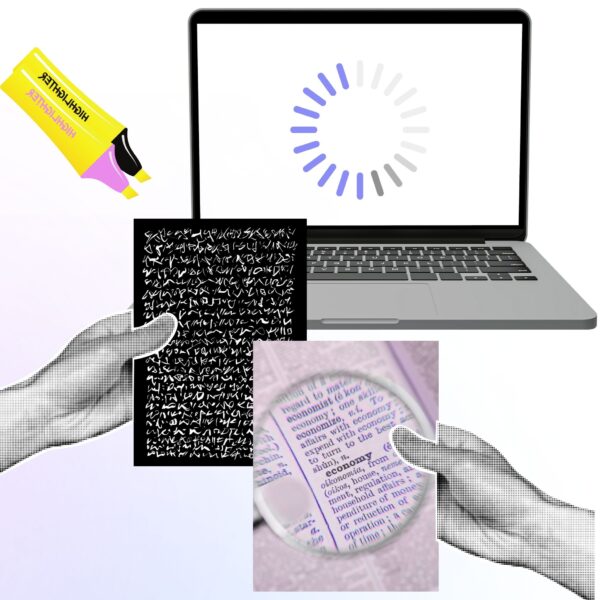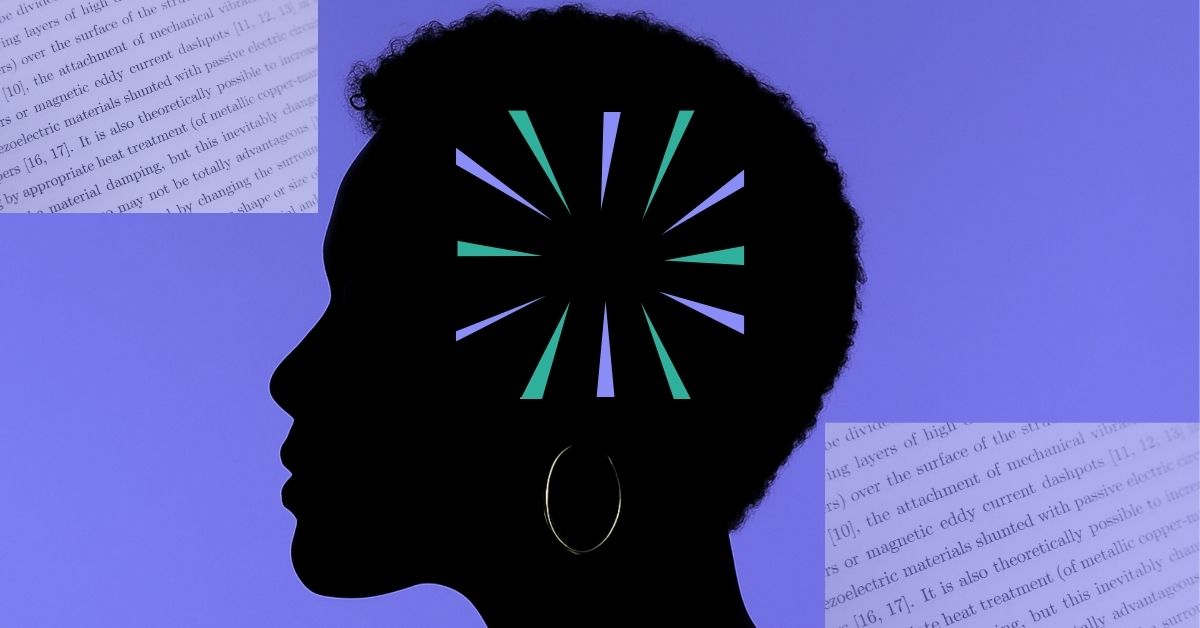There’s an AI for that, and there will always be an AI for everything from now on… “How Do You Explain…” in the Age of AI?
We’ve all been there—staring at a blinking cursor, tongue-tied in a meeting, or fumbling for words when a friend asks for help. “How do you explain this?” you wonder. Maybe it’s a new process at work, a science fact your kid throws at you, or something as deceptively simple (and a little intimidating) as “so… what exactly do you do for a living?” Sometimes, no matter how hard you try, the right words just won’t come.
But here’s the good news: you don’t have to figure it out alone anymore. In 2024, if you’re stuck and don’t know how to explain something, there’s an AI for that.
Seriously—AI tools are standing by to help you break down almost anything. Whether you’re searching for the perfect “AI finder” for your task, wondering “is there an AI for this?” for a super-specific problem, or you just want to explain things better, today’s AI is here and ready to help.
If you’re interested to learn more ways to use AI, scroll through our Learning Vault.
Now, let’s look at how AI is changing everything about learning, teaching, presenting—and even just talking to each other.
There’s an AI for That… is the New Standard
Remember when you’d just “Google it” and hope for the best? Now, information is everywhere, but clarity is rare. That’s where the Clarity Economy comes in—a world where the real currency isn’t just having knowledge, but knowing how to make it clear, fast, and for anyone. This is specially necessary when dealing with multiple stakeholders or people from different backgrounds, but still having the responsability to transmit ideas or complex subjects; AI helps you break down difficult concepts into easy to digest content. It might sound funny or an exaggeration but even an AI tool has a featured called:
“
Explain Like I’m Five AI Simplified by HyperWrite”

The feature helps you transform any type of complex topics into easy-to-understand explanations. Which is great for roles that require having to mingle with different types of people on the daily (like sales or coaching), or tasks related to generating content about various topics (content writer, SEO specialist, news reporter). It gives you more confidence to at least understand the overall idea of any subject.
AI explainer tools have become the new secret weapon… Suddenly, anyone can be that person who “just gets it”—and helps others get it, too.
But you don’t need this specific tool or feature to have an AI explain something in simple words. If you learn how to prompt effectively, you can use ChatGPT, Aurora, or Gemini to break down any topic for you. Want to get better at prompting and unlocking clear, simple explanations from any AI? Check out the Google Prompt Engineering Guide Breakdown for actionable tips on how to get the best results—no matter what tool you use.
Thanks to these advances, the promise of AI is showing up in everyday moments and across every industry. Whether you’re a professional, a parent, or just someone trying to keep up with new information, AI-powered explanations are quietly reshaping how we understand, search and communicate. The difference is more than technical; it’s practical and personal. Instead of getting lost in jargon or endless Google searches, people are finally getting the clear answers they need—right when they need them most.
But what does this look like in real life? Here’s a side-by-side snapshot:
Before and After—AI is Turning Confusion Into Clarity
| Sector | Old Way (Pre-AI) | New Way (AI-Driven Clarity) | Mini Scenario |
|---|---|---|---|
| Healthcare | Doctors hand out jargon-heavy pamphlets; patients nod but leave confused | AI summarizes diagnoses in plain English or even at a child’s level; patients actually understand and follow instructions | Anna leaves her appointment finally understanding what’s going on, and she feels confident talking about it with her family. |
| Finance | Clients get 20-page reports full of legalese; eyes glaze over | AI delivers bite-sized, client-ready breakdowns of compliance or investment moves, making meetings way more productive | During a meeting, Mike gets a clear summary of his portfolio’s changes—no more nodding along, he actually asks smart questions. |
| Education | Teachers scramble to adapt lessons for every student; some get left behind | AI personalizes explanations for different ages and backgrounds—no one’s left out, and every learner gets a fair shot | After struggling in class, Lily gets a kid-friendly explanation from her AI tutor and finally raises her hand with confidence. |
| Everyday Life | Googling “how to explain taxes to my kid” and hoping for the best | AI walks you through step-by-step, even with analogies or stories tailored to you and your family | Daniel uses an AI tool to explain taxes to his daughter—turning what used to be a headache into a fun little after-dinner lesson. |
What’s amazing is how quickly this shift is happening. “AI for everything” isn’t just a slogan—it’s becoming a daily reality for anyone who wants to communicate clearly. Now, when you ask, “is there an ai for this?”—the answer is almost always yes.

So, next time you’re lost in a maze of search results, remember: there’s an AI for that, and it’s built to cut through the clutter.
From “Can Anyone Explain It?” to “AI Can Teach Me This”
Alright, but how do these tools actually work their magic?
At their core, explainer AIs are built to answer almost any question—whether you’re a teacher, student, business pro, or just a curious person. They use language models (think: super-powered autocomplete) to turn tricky jargon into plain talk.
One of the coolest examples is the “Explain Like I’m 5” (ELI5) approach we mentioned previously. Want quantum physics in playground language? ELI5-style tools have you covered. This technology uses natural language processing to “translate” even the wonkiest concepts. But it didn’t start there, and it certainly doesn’t stop there. That feature’s name was clearly inspired by a real need—and a market—for simple explanations.
For instance, there are huge communities on Reddit designed for experts to show up and provide explanations to anyone asking almost any type of question. A real-life example is the community r/explainlikeimfive, which currently has 3.1 million weekly visitors and 17,000 new contributions each week. Since it was founded in 2011, the community has shown that humans have an innate curiosity—not just to understand things, but to explain them to others.
It’s a beautiful human tradition, almost part of our nature, that has helped us thrive for so long. Transferring knowledge will never get old, and now we’ve involved machines in this tradition to help us expand what’s possible.
Here’s a recent post in the community, labeled ‘technology,’ asking a question to the experts:
Eli5 : how can they “remaster” old music videos or movies to resolutions that they weren’t filmed on back when they first came out?
byu/wks_526 inexplainlikeimfive
Posted two days ago and it already has 201 replies from experts. The most upvoted answer is below:
Comment
byu/wks_526 from discussion
inexplainlikeimfive
Humans a great at this, and they will never stop being great at it! But the tech goes deeper. Some tools use Retrieval-Augmented Generation (RAG)—which basically means they don’t just guess, they look things up, too. Others use Chain-of-Thought prompting, breaking big ideas into step-by-step logic. And the smartest “ai finder” platforms let you set the style, tone, and level—so your AI explainer is always on your wavelength.
Imagine you’re explaining taxes to your teenager, blockchain to your boss, or “how do you explain” why the sky is blue to a four-year-old. These tools can do it all—fast, custom, and in language anyone can follow.
AI as the World’s Free Professor
Here’s a way to think about it: imagine you walk into a university, but instead of rows of lecture halls, there’s just one professor sitting at a table.
This professor is friendly, never tired, and knows absolutely everything. You can say, “Hey, I’m stuck—can you explain this to me like I’m a total beginner?” Or, “How to explain things better for my team?” Or even, “Can you make a study plan, quiz me, or turn this into a story?”. With the proper prompt, you can also ask your professor to adapt to your language, style of learning, and reading pace. You feel satisfied for today? Great. you can pause that chat and continue tomorrow.
That’s what today’s AI can be—a free, on-demand professor for anyone, anywhere. In this new era of “ai for everything,” you’re just a question away from learning anything, at almost any level. So why not ask?

Want to try? Here’s a real tool to get started.
Present Your Ideas Clearly, Beautifully, Instantly
So you’ve finally nailed that tricky explanation—now what? You want to share it, pitch it, or present it. That’s where Aurora Slides comes in: the best AI deck builder out there.
Aurora Slides is the shortcut from “I get it!” to “Let me show you.” Whether you’re presenting research to a gallery, walking a client through your art, or pitching ideas to your team, Aurora Slides turns your notes, sketches, or rough ideas into visual stories—automatically.
No design skills? No problem. Just drop your content in, and Aurora Slides gives you a polished, professional deck. You can share securely, get instant feedback, and look like you spent hours, not minutes, on your deck. It’s perfect for artists showing their process, researchers explaining complex projects, marketers peesenting their competitor analysis pitch deck, or anyone who wants their ideas to land with impact.
Follow us on LinkedIn for more updates and insights!
How To Learn Anything 10x Faster
Here’s a mind-blower from a popular YouTube video with 415,070 views “How To Learn Anything 10x Faster Than Anyone With AI”: AI doesn’t just help you learn faster—it changes the whole learning game.
- Start with a project, not just reading. Want to learn design? Build something real. Want to master a topic? Set a goal.
- Hit a wall? Use AI to break it down, get instant explanations, or even generate custom quizzes.
- Try the Feynman Technique: Use AI to explain what you just learned in your own words. If you get stuck, AI fills in gaps.
- Teach someone else (even if it’s just your AI). Writing and sharing what you learn makes it stick.
- Repeat: Build, learn, write, reflect—with AI as your guide at every step.
A gem from the transcript: “The struggle is the real learning—AI just helps you move faster through the hard parts.” That’s not about shortcuts—it’s about turning every question into a breakthrough.
Watch the full video here:
Reddit’s Take on Explanatory AI
But what do real people think? Reddit’s full of stories. Here’s what stands out:
- One marketer is turning the tables around and actually using an AI character (something crazy like a dog) to explain something they themselves crafted. What an original and fun way to attract views:
Thoughts on using an AI “character” to explain things?
byu/Grade-Long inSocialMediaMarketing
- Another user asked for advice and the best AI for learning new topics:
Which AI model is best for learning new stuff
byu/East-Ad8300 insingularity
- The answers and advice did not dissapoint:
Comment
byu/East-Ad8300 from discussion
insingularity
Comment
byu/East-Ad8300 from discussion
insingularity
If you’re using an “ai finder” or “ai for everything” website to find tools, remember: the tool should be a rocket booster, not autopilot. You’re still the pilot.
What AI Can’t Explain (Yet)
Let’s not sugarcoat it: AI can make things clear, but it’s not perfect. Sometimes, it lacks real-world nuance, makes odd leaps, or just plain gets things wrong because it can’t make moral judgements. There’s a risk of “synthetic wisdom”—answers that sound smart but aren’t rooted in experience. And there’s always the danger of bias or hallucinations…
If you’re in a high-stakes field—medicine, law, finance, psychology—AI is a tool, not a replacement for expert judgment. Always sanity-check its answers. Build your own “how to explain things better” muscle, and use AI as your assistant, not your final authority.\
Conclusion: The Future of Explaining
The idea that “there’s an AI for that” isn’t just a trendy saying—it’s quickly becoming a fact of daily life for anyone looking to learn, teach, share, or simply communicate more clearly. With so many AI-powered tools designed to help you break down complexity, you’ve now got a whole new kind of superpower at your fingertips.
But here’s the real secret: it’s not just about the technology. The magic happens when you combine the speed of AI with your own creativity and a real understanding of what your audience needs. That’s how you truly connect and make ideas stick.
So, are you ready to give it a go? Try out new AI marketing tools, experiment with platforms like Aurora Slides, and discover just how much easier it can be to explain, build, and teach—whatever the topic, whoever the audience.

Frequently Asked Questions (FAQs)
How do I use AI to explain things better?
A: Pick a tool that fits your level or audience, ask it to break things down, and always read, revise, and add your personal touch.
Is there an ai for any specific subject?
A: Almost certainly. Try searching your topic plus “AI”—or use an “ai finder” directory. But most large language models cover multiple functionalities such as: AI and creativity, brainstorming, and structuring unstructured data. But if you’re looking for something very specific like dealing with analytics, accounting, or trying to find the best AI for creative writing, it would be best if you extend your research beyond a simple google search and contact professionals already using AI for those fields.
What should I check when using AI explanations?
A: Check for clarity, accuracy, and relevance—and always sanity-check important info with a human expert.
How do I present my research with Aurora Slides?
A: Just drop in your notes, research, or rough ideas—Aurora Slides will turn them into polished, shareable decks in minutes.
What if there’s an AI for that but I have to pay?
A: Great question! Many AI tools offer free basic versions, but some advanced features or premium apps do require payment. Here’s the good news: you can usually try out the core features for free to see if it fits your needs. If you find a tool that really helps you explain, create, or solve problems, consider it an investment—just like paying for a great teacher, a handy app, or a professional service.
And if cost is an issue, don’t worry—there are plenty of free or low-cost “AI for everything” options out there. For example Aurora offers a 30-day free trial here. For other free tools, check reviews, compare features, and don’t be afraid to mix and match free tools until you find what works for you.
